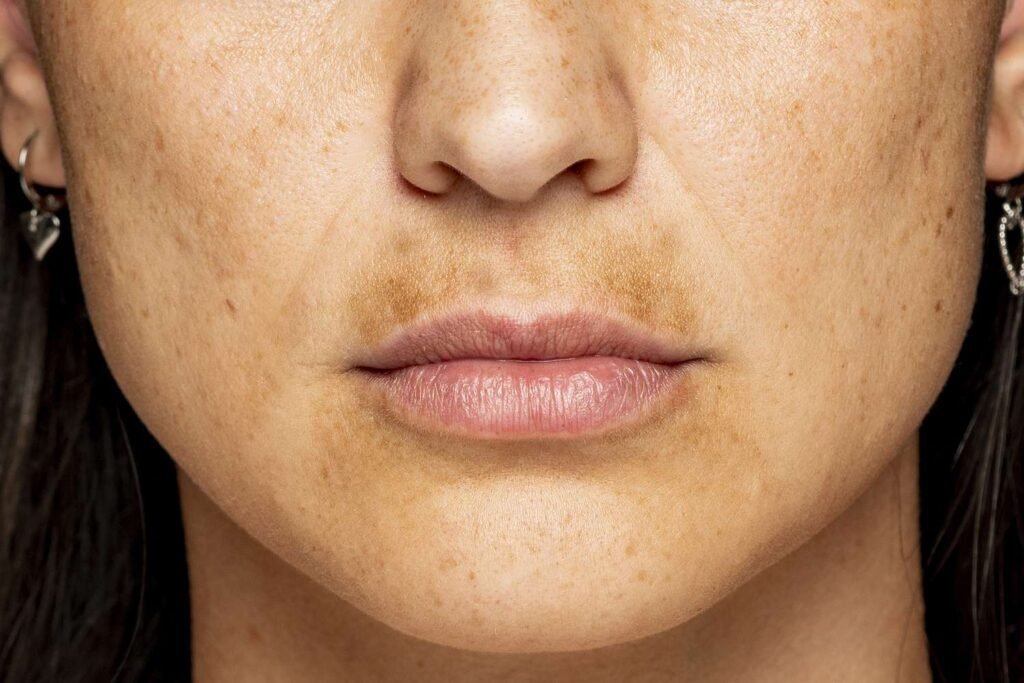Understanding Melasma: Causes, Symptoms, and Treatment Options
Melasma, often referred to as a “melasma mustache,” is a common skin condition that can cause dark patches, particularly on the face and upper lip. If you’re planning to spend time outdoors this summer, understanding the causes and preventive measures for melasma is essential for skin health.
Key Takeaways
- Melasma is characterized by brownish patches on sun-exposed areas of the skin, especially the face.
- Key factors contributing to its onset include hormonal changes, sun exposure, genetics, and certain medications.
- Although it’s not dangerous or a sign of skin cancer, melasma can affect self-esteem.
What Is Melasma?
Melasma occurs due to increased activity of melanocytes, the skin cells responsible for producing melanin. This results in hyperpigmentation, leading to dark patches that can affect not only the face but also areas like the neck.
"Melasma is not considered dangerous and does not develop into skin cancer," according to the American Academy of Dermatology.
What Causes a Melasma Mustache?
Melasma can be triggered by various factors, including:
- Hormonal Changes: Fluctuations in estrogen and progesterone (common during pregnancy or when using birth control).
- Sun Exposure: UV rays increase melanocyte activity.
- Genetic Predisposition: Family history can play a role.
- Certain Medications: Usage of medications that lead to skin sensitivity.
- Other Health Conditions: Thyroid issues may also contribute to its development.
Expert Insight: "If you have hormonal fluctuations and considerable sun exposure, you may see an increase in melasma," notes Susan Massick, MD.
Who is Affected?
Melasma is more prevalent in women, particularly those aged 20 to 40. Approximately 15-50% of pregnant women might experience a form known as chloasma, or "pregnancy mask."
"This hormonal surge can lead to increased pigmentation, especially when exacerbated by sun exposure," adds Melanie Palm, MD.
What Does It Look Like?
Melasma typically manifests as:
- Dark brown or grayish-brown patches on the cheeks, forehead, and upper lip.
- A "mustache" appearance, which may extend under the nostrils or dominate the upper lip.
It’s essential to note that melasma does not cause physical discomfort, such as itching or swelling.
Prevention: Is It Possible?
While it can be challenging to prevent melasma entirely, you can mitigate risks by following these steps:
- Use Sunscreen: Choose a broad-spectrum sunscreen (UVA and UVB protection) and apply it daily, especially on your face and neck.
- Limit Sun Exposure: Stay indoors during peak sun hours (10 a.m. to 3 p.m.) and steer clear of tanning beds.
- Wear Protective Gear: Use wide-brimmed hats and sunglasses whenever going outside.
Treatment Options
If you notice discoloration or suspect you have a melasma mustache, consulting a board-certified dermatologist is crucial for an accurate diagnosis. Treatment options may include:
- Topical Treatments: Such as vitamin C, retinol, and prescription skin-lightening creams like hydroquinone.
- Oral Medications: Tranexamic acid can be prescribed in certain cases.
- Advanced Procedures: Chemical peels or laser treatments may be effective, but multiple sessions may be required.
"There is no cure for melasma; however, with proper diagnosis and treatment, the appearance can improve," states Dr. Massick.
Conclusion: What This Means for You
If you’re dealing with the frustration of melasma, remember that you’re not alone. Properly managing sun exposure and seeking the right treatments can help improve your skin’s appearance. Always consult a dermatologist for tailored advice and recommendations.
For more information on skin health and melasma, check out resources from reputable skin care organizations and dermatology associations. Adhering to precautionary measures and maintaining a treatment regimen can lead to effective management of this skin condition.


